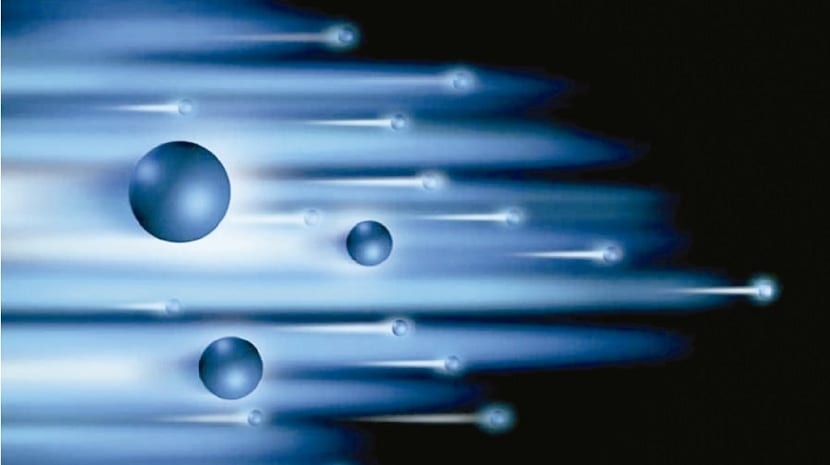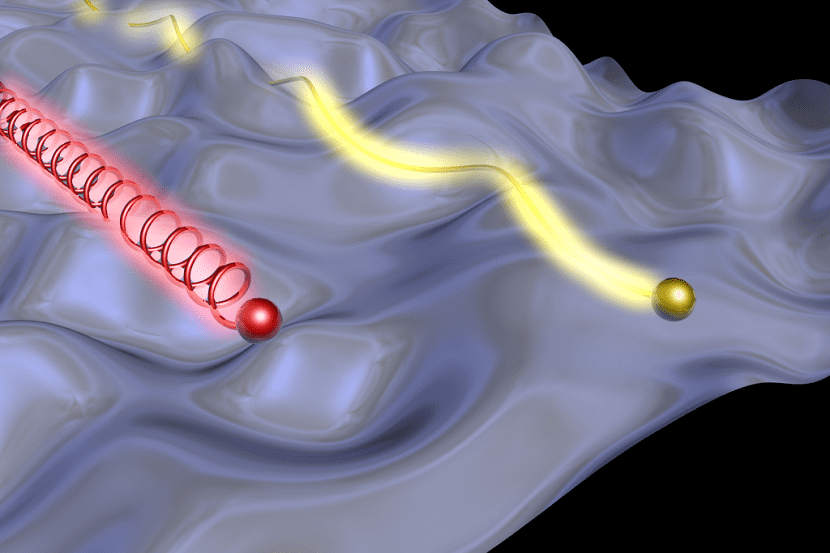
Surely you have ever heard of photons. Many times it is spoken in the field of chemistry and other times in physics but what is really a photon? It is a particle of light that propagates in a vacuum and moves. It is the photon that causes electromagnetic radiation to move from one point to another in the different ways in which we can see it.
Don't miss out on all the related information about the photon. We explain in detail the characteristics, discoveries and advances that photons have given in science. You want to know more?
What is a photon?
This is something complex to explain well in a single sentence as we have done above in the introduction. It is an elementary and primal particle, so to speak, capable of moving through a vacuum, transporting all electromagnetic radiation. The word photon comes from photo which means light. That is, a photon is also light. We are not just talking electromagnetic radiation when we refer to harmful ultraviolet rays, gamma rays from space, or infrared light.
It must be remembered that within the electromagnetic spectrum we have an area that we know as visible light. This area moves between 400 and 700 nm and is what makes us see the full range of colors between red and blue.
As we have said before, it is very complex to define the word photon just like that. In fact, most of the time this term is used on a daily basis, it is misused. What we will say for sure is that it is a particle whose mass remains stable. Thanks to this stability, it is capable of traveling in a vacuum at a constant speed. Although it may seem unreal or straight out of the sleeve, photons can be analyzed at both microscopic and macroscopic levels. That is, when we see a ray of light entering through a window, we know that photons are passing through there.
Furthermore, as it travels through a vacuum carrying electromagnetic radiation, it does so while maintaining all its wave and corpuscular properties. Namely, it is able to function as if it were a wave. For example, if we carry out a refraction on a spectacle lens, the passage of photons is assimilated to that of a wave. When the photon finally reaches matter after traveling through a vacuum, it will remain one more particle that maintains all its Energy unaltered.
Properties and discovery

If we carry out the experiment with a lens, we can only reflect one photon during the entire refractory process. While conducting the experiment, you can see how the photon is able to act as a wave and interfere with itself. However, although it behaves like a wave, it does not lose the characteristics that make it a particle. That is, it has a specific position and a quantity of movement that can be quantified.
We can measure the properties it has as a wave and as a particle at the same time since they are part of the same phenomenon. These photons cannot be located in space.
Surely they are thinking that who knows what I am saying, because everything seems very complicated. Let's get to know better how the photon was discovered to clarify a few things. As we know, Albert Einstein was a great physicist (if not the best of all time) and he devoted part of his studies to photons. It was he who gave these particles a name, which he called the quantum of light.
This happened at the beginning of the XNUMXth century. Einstein was trying to explain the experimental observations that did not fit with the investigations that had of the light. And it is that it was thought that light acted as an electromagnetic wave and not as a flow of particles called photons (although these in turn can behave as waves).
It is then that Einstein could redefine the term quantum of light and accept that the energy that light possesses is totally dependent on its frequency. In addition, the matter on which the light is deposited and the electromagnetic radiation carried by the photons are in thermal equilibrium (Hence, light can heat surfaces and objects).
Physicists who have assisted in the discovery of the photon

As this is not something easy to analyze and investigate (and less with the technology that existed in the twentieth century and earlier), it was thanks to the research of some important physicists that light was known as a particle and not as waves.
One of the physicists on whom Einstein relied to derive his theory was Max Planck. This scientist had to work on all aspects of light and defined them by Maxwell's equations. The problem that he could not solve was why the light that was projected on objects arrived in small groups of energy.
When Einstein introduced a different theory with respect to what he was used to, it had to be tested. Indeed, they knew through the Compton effect that the hypothesis that light was composed of photons was true.
It is later when, in 1926 physicist Gilbert Lewis change the denomination of quanta of light per photon. This word comes from the Greek word for light, so it is perfect to describe it.
Dynamics and operation today

Photons can be emitted in multiple ways. For example, if a particle is accelerated with an electric charge, its emission is different, since it has other energy levels. We can remove the photon, making it disappear with its antiparticle. Since the discovery of these aforementioned scientists, the understanding of photons has changed enormously.
At present, the laws of physics are quasi-symmetric in space and time, so all the studies that are carried out on these light particles are very exact. Therefore, since all properties are known in great detail, they serve for the high resolution microscopy, photochemistry and even the measurement of the distances between molecules.
As you can see, various studies that were conducted more than a century ago help us to continue advancing with science today.
